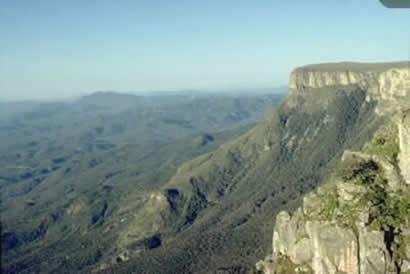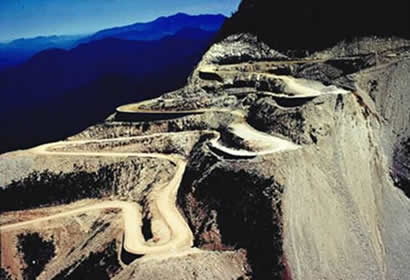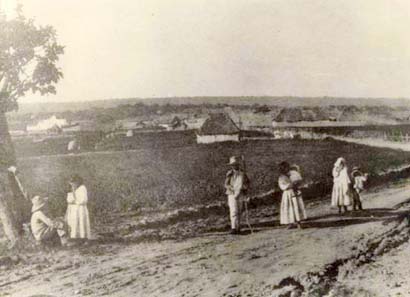

Stretching for more than a thousand kilometres and with an average altitude of twelve hundred meters above sea level, the central plateau enjoys a temperate climate and luxuriant vegetation. Rivers criss cross the plateau and make it a very fertile area.
The Settlers, two to three months into they trip, sleeping at night around a camp fire and with food fast running out, must have felt relieved to at last see water and green vegetation.
After the Chela range the Settlers still had to travel a further one hundred kilometres until they reached the place were they started building the Lubango settlement. They chose the base of another impressive monolithic in the Angolan landscape as the place for the settlement.
They called that rock Nossa Senhora do Monte (Our Lady of the Mountain).
The first job the settler had to do was to cut the timber to build a series of barracks to house them. What a task this must have been for them! To obtain the timber to build the settlement they had to venture into the African jungle, surrounded by all sorts of dangerous and strange animals.
Lions, leopards, elephants, hyenas, snakes were and still are common in the jungles of Angola. Crocodiles and hippopotami populated the rivers. And for the Settlers, all of this was a new experience which they had to learn to cope with without external help.
For several months they lived in tents and under the boer wagons waiting for the barracks, to be completed. It must have been a pleasant occasion for them to, finally, been able to have a roof over their heads, after almost one year of sleeping under the stars. The first settlement in Lubango was called "Os Barracões" (The big sheds).
According to Francisco de Freitas, his great grand father started a business building Boer Wagons and probably he made the one that António and his brother Albino used on their trip to Chimbondo.

View of the Chela Range( Leba)

View of the new road that made climbing the Chela Range (Leba) a breeze

The site where the first settlers lived in Lubango - Os Barracões. In the picture are some members of the Costa family.
photo provided by Francisco de Freitas, grand son of Guilhermina Costa